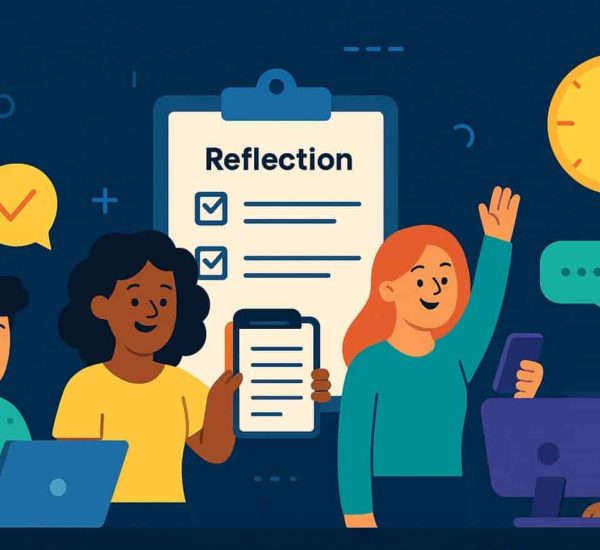Staffing is a critical aspect of any organization’s success. Having the right number of employees with the right skills and experience is essential for a successful business. A staffing plan is a strategic document that outlines an organization’s workforce needs. It is an essential tool for businesses to manage their workforce effectively and efficiently.
In this blog, we will discuss the importance of a staffing plan, its benefits, and how to create one. Such as assessing the current workforce, identifying skill gaps, determining future workforce needs, and developing job descriptions. We will also share some best practices for implementing and monitoring a staffing plan. To ensure that it remains aligned with the organization’s goals and objectives.
Whether you’re a small business owner or a human resource professional, this blog aims to equip you with valuable insights and actionable tips for creating a successful staffing plan. Let’s get started and discover how staffing plans can help your organization achieve success and why they are so important.
What is a Staffing Plan?
A staffing plan is a strategic document that outlines an organization’s workforce needs. Including the number of employees required, the skills and experience necessary, and the timeline for hiring and training. The staffing plan aims to ensure that the organization has the right people with the right skills at the right time to achieve its goals.
A staffing plan typically includes information about the organization’s current workforce. Such as the number of employees, their roles and responsibilities, and their skills and experience. Additionally, it outlines how to address any gaps in the current workforce through recruitment, training, or other strategies.
Why is a Staffing Plan Required?
To Ensure Adequate Staffing Levels
A staffing plan helps businesses to determine the optimal number of employees required to meet their targets. By having the right number of employees, businesses can avoid understaffing, which can lead to increased overtime costs, poor customer service, reduced productivity, and employee burnout. On the other hand, overstaffing can result in unnecessary costs and inefficiencies.
To Identify Skill Gaps
A staffing plan helps businesses to identify the skills and experience required for each role in the organization. By doing so, they can identify any skill gaps that may exist and develop strategies to address them through training, recruitment, or other means.
To Plan for Turnover
Businesses need to plan for employee turnover and other staffing changes, such as retirements, resignations, or transfers. A staffing plan helps businesses to anticipate these changes and prepare for them by identifying potential successors, cross-training employees, or developing contingency plans.
To Manage Labor Costs
Labor costs are a significant expense for most businesses. A staffing plan can help businesses to manage these costs by identifying opportunities to improve productivity, reduce overtime, and optimize staffing levels.
To Align Staffing with Business Goals
A staffing plan ensures that the workforce is aligned with the business’s strategic goals and objectives. By doing so, businesses can ensure that they have the necessary resources to achieve their goals, while also minimizing costs and maximizing productivity.

How to Develop a Staffing Plan?
At the core of a staffing plan, we only need to do four main activities:
- Define staffing needs to achieve organizational goals
- Determine your current workforce
- Estimate future staff requirements
- Fill the gap between your current workforce and future requirements
Define your Organization’s Goals
The first step in creating a staffing plan is to clearly define the organization’s goals and objectives. This will help you determine the number and type of employees you need to achieve those goals.
For instance, if the business is planning to expand into the South-East Asian market you may need to hire an entire team to handle that division. While also moving around current staff to head it.
Assess your Current Workforce
You can evaluate your current workforce to determine their strengths and weaknesses, as well as identify any gaps in skills or experience that need to be filled. How can you do this?
Use your current org chart software to measure:
- Current staffing figures
- Staff distribution across geographies, departments, and teams
- Skills and competencies within the workforce
- High performers for succession planning
- Low performers or “flight risks” who could increase attrition
- Average staff tenure and age to anticipate retirees
Determine your Future Workforce Needs
Based on your organization’s goals and your current workforce assessment, determine the number and types of employees you will need in the future.
- Review your organization’s business plan: Your organization’s business plan should provide insight into its future growth plans, which can help you forecast future staffing needs.
- Analyze historical data: Reviewing past staffing trends, turnover rates, and patterns can help you identify areas of the business that may require additional staffing in the future.
- Evaluate market conditions: Evaluate external factors such as the economy, industry trends, and labor market conditions to help you forecast the demand for talent in your industry.
- Conduct a skills inventory: Analyze the skills and competencies of your current workforce to identify any skills gaps and areas where additional staff may be needed.
- Develop scenario planning: Use scenario planning to consider a range of possible future scenarios that could impact your organization’s staffing needs, such as expansion, downsizing, or changes in technology.
- Consult with managers: Consult with managers and department heads to gather insights into their anticipated staffing needs for the coming year or period.
- Use forecasting tools: There are a variety of software tools and models available that can help you forecast future staffing needs. Consider using these tools to help you analyze and predict future staffing trends.
Do a Gap Analysis
To identify any gaps or deficiencies that need to be addressed, compare the current state of your staffing to the desired future state. These gaps may include shortages of employees with specific skills, or a lack of staff to support specific functions or business areas. It could even include key leaders approaching retirement age where the staffing plan should deal with succession planning.
Prioritize the identified gaps based on their potential impact on the organization’s performance, the urgency of the need, and the feasibility of filling the gap.
Implementing a Staffing Plan
Create a Timeline for the Staffing Plan
A staffing plan without a deadline and constraints is too open-ended. Create a timeline for each step of the hiring process. This can include posting job openings, reviewing resumes, conducting interviews, and making job offers.
Depending on the requirements that need to be filled, you could also incorporate plans for upskilling and succession planning.
Develop Job Descriptions
Once you have determined the positions you need to fill, develop job descriptions that clearly define the roles and responsibilities for each position.
Determine Compensation and Benefits
Determine the compensation and benefits package for each position to attract and retain top talent.
Identify Key Recruitment Sources
Identify recruitment sources, such as job boards, social media, and professional organizations, to reach potential candidates.
Implement the Plan
Finally, implement the staffing plan by posting job openings, conducting interviews, and hiring the best candidates for each position.
Monitor and Adjust
Regularly monitor the effectiveness of your staffing plan. Adjust as necessary to ensure your workforce remains aligned with your organization’s goals.
Conclusion
To build a talented, motivated, and productive workforce that is equipped to meet the challenges of a rapidly changing business environment, organizations can benefit from a well-designed staffing plan.
By following the steps outlined in this blog, organizations can develop a comprehensive staffing plan. That aligns with their strategic objectives and enables them to achieve their business goals.





